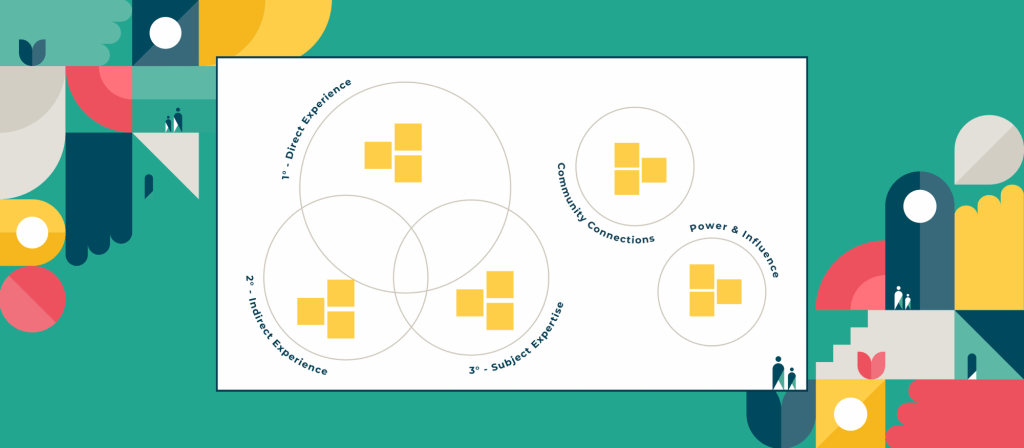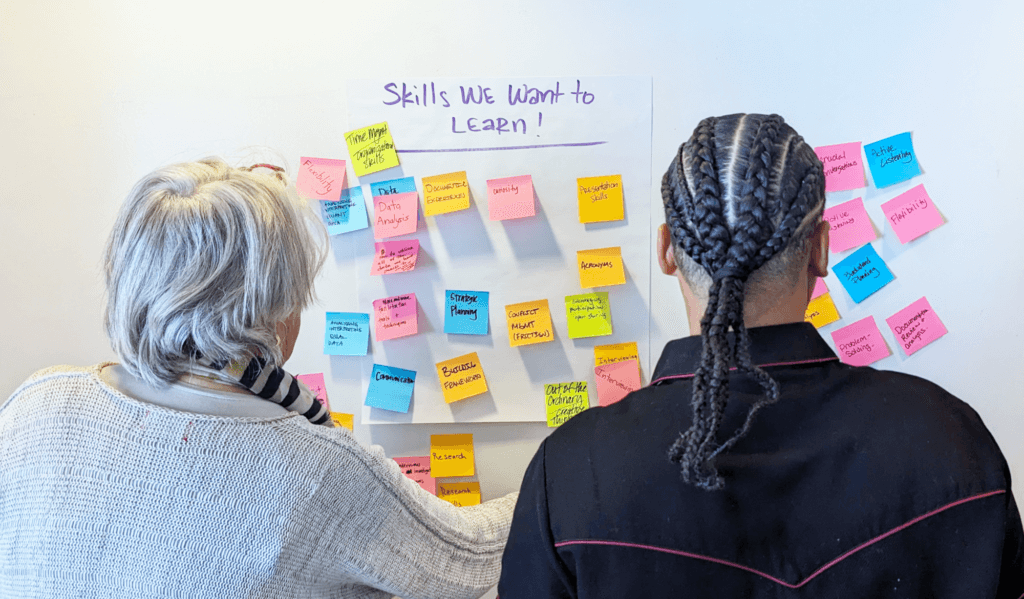Tool Case Study: Stakeholder Identification in LA Workforce Development
Making sense of a system by identifying the people involved (by Teil Samuels)

An early artifact of the Stakeholder Identification Tool, filled in to begin identifying contacts for discovery research.
The CivicMakers Team led the inaugural Workforce Transformation Corps cohort, in partnership with Make Fast Studio, Jobs for the Future, California Workforce Association, Turning Basin Labs, and the James Irvine Foundation. This year-long learning and engagement program placed fellows in workforce development boards throughout the state of California to integrate human-centered design and equity-centered approaches into their organizations and their work with communities.
Teil Samuels was one of five Fellows in the Workforce Transformation Corps (WTC). He worked closely with the City of Los Angeles Workforce Development Board to ‘better connect potential participants to services’.
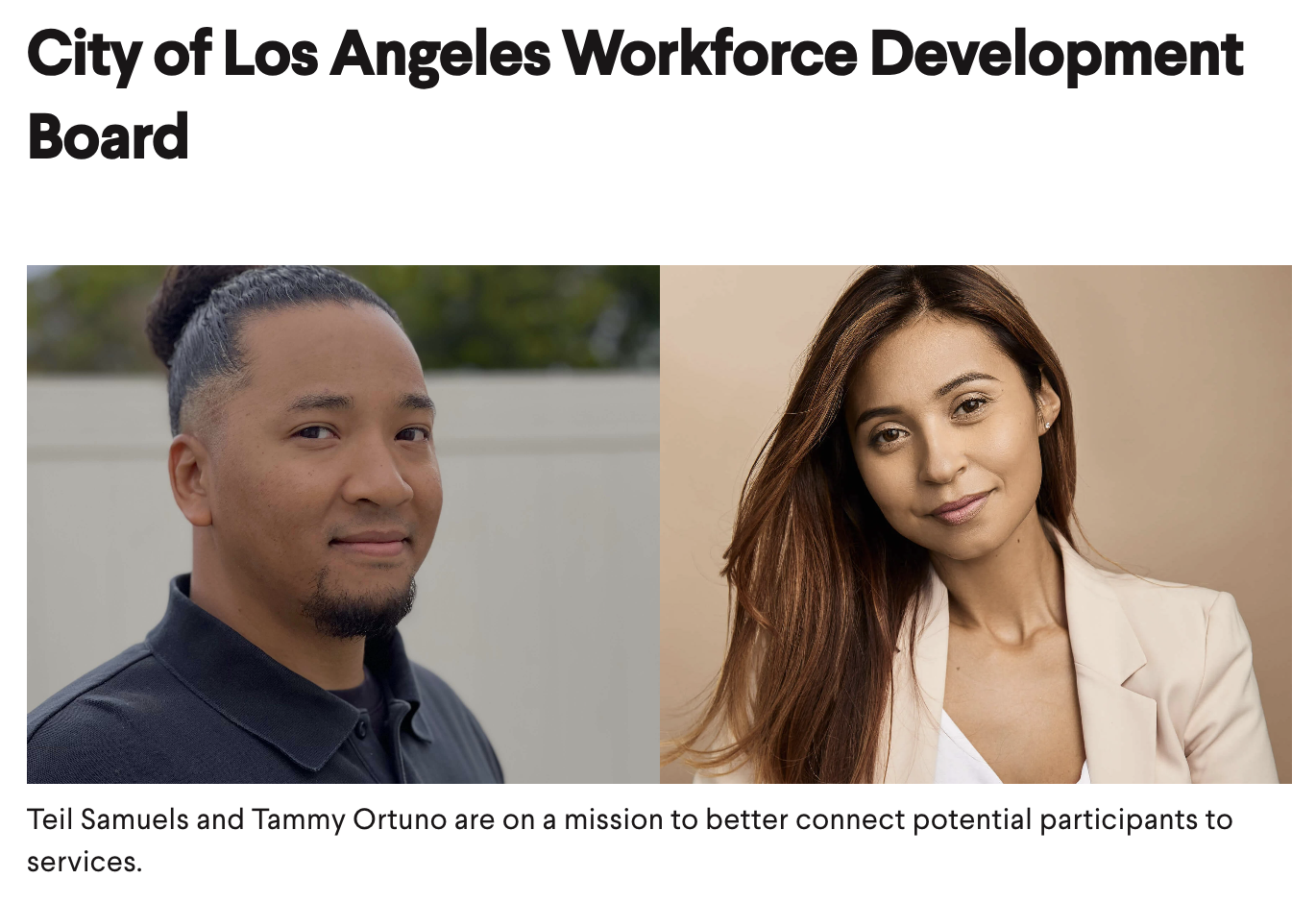
Tool Application
Using the Stakeholder Identification to Support Discovery Interviews
My project focused on improving the system from within and identifying areas for improvement through organizational structures. It was critical to understand the nuances of how these structures coexisted, with the goal of enhancing the experience for stakeholders within the structures and the overall ecosystem.
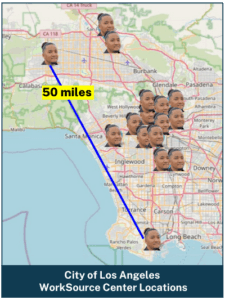
The Stakeholder ID tool helped me gain a deeper understanding of the vast geographic and organizational landscape of the workforce system in LA City through a human lens. During this activity, I also made note of the locations of different organizations throughout the City. The geographical aspect was particularly important in understanding the needs of job seekers, as commuting plays a significant role in the daily lives of Angelenos.
The accessibility of resources, often linked to stakeholders in workforce development, significantly guided my work on the project.
The Process
1. Map out a list of key stakeholders in the workforce system and board. Use the Stakeholder ID tool to consider how those different stakeholders may be connected to (1) the challenge being explored, and (2) resources to be able to change the system.
2. Prioritize stakeholders to connect with in the discovery phase, and develop a contact list of those key stakeholders.
3. Find partners and champions within the system to make connections with people.
4. Once the connection is made, schedule an interview session with each stakeholder. In my experience, people really appreciated the in-person component and meeting them where they are. Just note that in a city like LA, traveling can be exhausting.
5. Prior to meeting stakeholders, try to learn as much as you can about what they do, their experience, and the role they play in the system.
6. Develop your set of interview questions and tailor them to the specific type of stakeholder you’ll be interviewing. Have roughly 10 questions ready, but you’ll more than likely only be able to ask 3-4. The Interview Protocol tool, developed by CivicMakers, was particularly useful in this step.
7. During the interview, be present—no need to always stick to the script. From my experience, stakeholders could talk endlessly about how the system works and how to improve it. However, when that doesn’t happen, you can rely on your Interview Protocol tool.
Recommendations
- Revisit the list of stakeholders throughout the project lifecycle to ensure other stakeholders that emerge through your research are appropriately represented.
- Be prepared to spend as much time with the interviewee as they allow. A lot of valuable data can emerge from a single conversation if you let it unfold naturally. It might be a good idea to clear your schedule to allow for preparation, the interview itself, and post-interview review and analysis.
- During interviews, listen intently and take detailed notes. Stakeholders are typically the experts and historians of the field. Often, if you ask the right questions or listen carefully, they can guide us towards solutions within the larger system.
- It’s not you, it’s them – everyone has a job to do, a role they take on, and personal responsibilities that are affected by their professional decisions. There are a multitude of reasons as to why change doesn’t occur overnight and impactful change certainly doesn’t rely on a single individual.
Author
Teil Samuels
Violence Prevention Manager, City of Long Beach
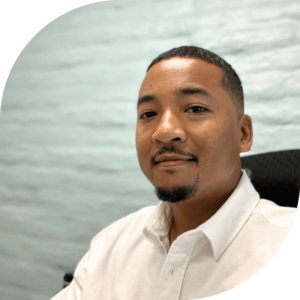
Originally from NYC, Teil Samuels moved to Southern California in 2022, where he began his journey in government service as a Fellow for the City of Los Angeles Office of the Mayor. After completing his fellowship, Teil joined the City of Long Beach Department of Health and Human Services. He currently serves as the Violence Prevention Manager, managing the city’s public safety efforts within marginalized communities. His strategies focus on implementing trauma-informed approaches while acknowledging the harm that local government has caused in Long Beach communities. Teil’s commitment to improving the well-being of those impacted by the system is informed by nearly two decades of experience working primarily with community-based organizations in youth and community development in NYC.
